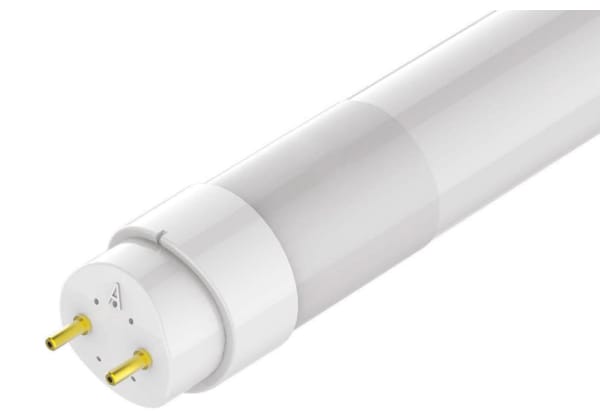- Published 20 Jun 2024
- Last Modified 20 Jun 2024
- 5 min
How to Safely Dispose of Fluorescent Lights
Though convenient, efficient, and inexpensive, fluorescent lighting tubes require careful disposal to prevent severe health, safety, and environmental effects. Learn more in this article.

Reviewed by Jay Proctor, Technical Support Team Leader (May 2024)
Fluorescent light tubes have many pros: they are lightweight, convenient, efficient, affordable, and ubiquitous. The cons are the hazards of fluorescent tube disposal. Fluorescent tube materials can cause serious health, safety, and environmental issues, which can all easily arise from improperly handling or disposing of these tubes.
To mitigate these hazards, UK fluorescent tubes disposal regulations exist to give consumers and businesses channels for fluorescent tube recycling. The UK also has directives to phase these tubes out entirely.
Properly Disposing of Fluorescent Tubes
Safely Handling Fluorescent Tubes
When fluorescent light tubes are installed and operating, they’re perfectly safe and very energy efficient. Their hazards are their internal materials, mainly phosphor powder and mercury, which are essential parts of the chemical reaction that produces fluorescent light. These tubes can easily break, which can and will release toxic mercury into the water, earth, and air. On top of this possible environmental contamination, mercury exposure can severely affect the human body.
To safely remove burnt-out fluorescent tubes:
- Ensure only trained, competent people perform this work
- Turn off the light fixture, and its circuit breaker if possible to ensure power is disconnected
- Lay down a drop cloth to protect the tube if it falls and to contain its material if it breaks
- Remove the tube, twisting or stroking based on the fixture mechanism
- Gently handle the tube, applying no compressive force
- Store the tube snugly and securely, such as in its original box with other spent tubes (all loose and unbound)
If you do break a fluorescent tube:
- Open windows and doors and turn off ventilation to safely flush out mercury vapour
- Put on sturdy protective gloves and a facemask
- Do NOT use a broom or vacuum cleaner
- Prepare sealable jars, containers, or plastic bags for the broken materials
- Carefully pick up large broken glass shards by bending cardboard or thick paper into a scoop
- Use strips of tape to pick up all small shards and dust
- Wipe the affected zone clean with damp disposable towels
- Place ALL glass, dust, other tube components, scooping material, tape, towels, gloves, masks, and affected clothing into the containers and seal them
- Take the containers and remaining tube portions to an authorised fluorescent tubes disposal site
UK Legal Requirements for Fluorescent Tubes Disposal
UK fluorescent tube disposal falls under the Waste Electrical and Electronic Equipment (WEEE) Directive. This regulation aims to reduce this waste going to landfills and encourage reusing and recycling of this material. The onus is on producers of these materials to pay for their disposal and on distributors to provide access.
To assure WEEE compliance for lighting, producers of fluorescent tubes must:
- Register annually as a WEEE producer
- Join and pay into a producer compliance scheme (PCS) group to organise and facilitate recycling fluorescent tubes
- Design fluorescent tubes’ packaging to identify them as EEE using the crossed-out bin symbol
- Publish readily available information on safe fluorescent tube disposal
In turn, distributors and retailers of these tubes must connect to this recycling effort through measures like accepting spent tubes from consumers free of charge. The obligations and fees vary based on things like the amount of EEE sold, business floor area, and whether sales are only online, so study the regulations carefully to ensure your company’s WEEE compliance for lighting.
All involved companies must store WEEE in designated bins, record the types and amounts of WEEE they collect, and transport WEEE using only licensed carriers.
UK Resources for Fluorescent Tubes Disposal
The UK offers the following channels for safe and compliant disposal of fluorescent tubes:
- Many cities have waste drop-off sites that accept these tubes. They may only serve residents, though, and thus can require government ID for tube drop-off
- Businesses like hardware stores, i.e., places that sell these lights, often accept spent tubes as part of WEEE compliance for lighting
- WEEE pickup services can come to collect spent and broken tubes for a fee
- Some landfills accept these tubes and then direct them to fluorescent tube recycling centres
Above all, do not place these tubes in regular rubbish or recycling bins. Watch for the crossed-out bin symbol on any electronics packaging and bring this waste to proper disposal sites.
How Fluorescent Tubes Recycling Works
Can fluorescent tubes be recycled? Indeed they can, though it takes a careful process in the right kind of facility:
- Drums crush fluorescent tubes into fine pieces and powders
- Agitators, magnets, and other mechanisms separate the glass, metal, phosphor powder, and mercury
- The crushing and separation may each happen in progressively finer phases
- The different materials are collected into their appropriate receptacles for distribution, with hazardous waste labelled appropriately
These processes all happen indoors under negative pressure, drawing mercury vapour and phosphor powder safely into appropriate filters and carbon beds to prevent releasing hazardous material into the atmosphere.
/IDEAS%20and%20ADVICES/Modern%20Office%20Lighting/LED%20vs.%20Fluorescent.jpg)
Benefits of Recycling Fluorescent Tubes
Fluorescent light recycling benefits society through reduced waste, reused materials, and eliminated hazards.
- Waste reduction: Less waste sent to the landfill is always a win
- Material reuse: The glass can be used for sandblasting or making things reflective, the metal can be recycled, and the mercury can be reused, including in new lights
- Environmental safety: Escaped mercury can transfer from organism to organism, infecting them along the way. This causes suffering to creatures, ruined land and waterscapes, and a contaminated food supply
UK Phase-Out of Fluorescent Tubes
All these fluorescent light recycling measures come alongside measures to reduce their use in the first place - the UK’s fluorescent tubes ban.
Driven by initiatives in the European Union, the August 2023 update to the restriction of hazardous substances (RoHS) regulations fully prevents UK businesses from manufacturing new T5 and T8 fluorescent lights starting from February 1, 2024. Businesses may still sell existing inventory of these lights while supplies last, but these regulations prevent them from replenishing these supplies. T5 and T8 refer to the light’s diameter (5/8-inch and 1-inch, respectively), so cutting out those common sizes should encourage businesses and consumers to seek out greener alternatives.
LED tube lights exist in those sizes, letting you swap safer tubes into existing fixtures. If you’re designing new spaces and can place new fixtures, CFL bulbs are another great choice for safe, efficient lighting.
This fluorescent tube ban will eliminate those tubes’ hazards at the source, creating safer and greener environments and reducing the headache of fluorescent tube disposal.
We are ready to supply you with T5 and T8 LED tube lights, non-banned fluorescent tubes, and plenty of other lighting options.
Related Articles
Related links
- What is Isopropyl Alcohol?
- Fluorescent Tube Buying Guide
- A Buyer’s Guide to LED Tube Lights
- Philips Lighting 18 W T8 Fluorescent Tube 600mm, G13
- Fluorescent Tubes
- Philips Lighting 80 W T5 Fluorescent Tube 1450mm, G5
- Philips Lighting 51 W T8 Fluorescent Tube 1500mm, G13
- Philips Lighting 32 W T8 Fluorescent Tube 1200mm


